Transportation is an ever-growing sector of the global economy that is vital for all industries, and it has enormous potential. But modern transport companies should monitor large amounts of data to successfully deliver goods, which is challenging. Logistics software development is the solution to automate shipping and freight forwarding activities and allow transport companies to simplify freight operations, save time, reduce costs and improve customer services. The most universal solution is, perhaps, a transportation management system (TMS).
Leverage SaM Solutions’ decades-long expertise in IT to develop high-quality custom software for your business.
What Is a Transportation Management System?
Enterprise software to manage the processes of the movement and storage of goods is called a transportation management system. Simply put, TMS is an integration platform that enables companies to handle and optimize supply chain transportation and logistics management.
Logistics management solutions form a part of ERP systems and help control the entire supply chain, dealing with both inbound (procurement) and outbound (shipping) activities. Its ultimate goals are to
- enhance shipment efficiency;
- provide visibility of logistics processes;
- reduce transport expenses;
- improve customer service.
The flexibility of such platforms allows developers to create both logistics software for small businesses, as well as large enterprise logistics software to handle complex transport networks.
Logistics Industry in Figures
The increasing development of digital technologies, such as mobile, the Internet of Things, cloud computing and artificial intelligence, facilitates the vigorous growth of the global TMS market. It happens because the software for the logistics industry incorporates numerous emerging technologies and provides significant business value, so more and more companies opt for its introduction.
According to researchers, software for logistics management can save a company from five to ten percent in transportation spending. The global transportation management system market is predicted to reach $30 billion by 2025.
The diagram by Statista provides information on the revenue of the world’s leading freight transportation companies in 2018. Such results were achieved due to the implementation of management systems.
Leading freight transportation companies worldwide in 2018, based on freight revenue (in million U.S. dollars)
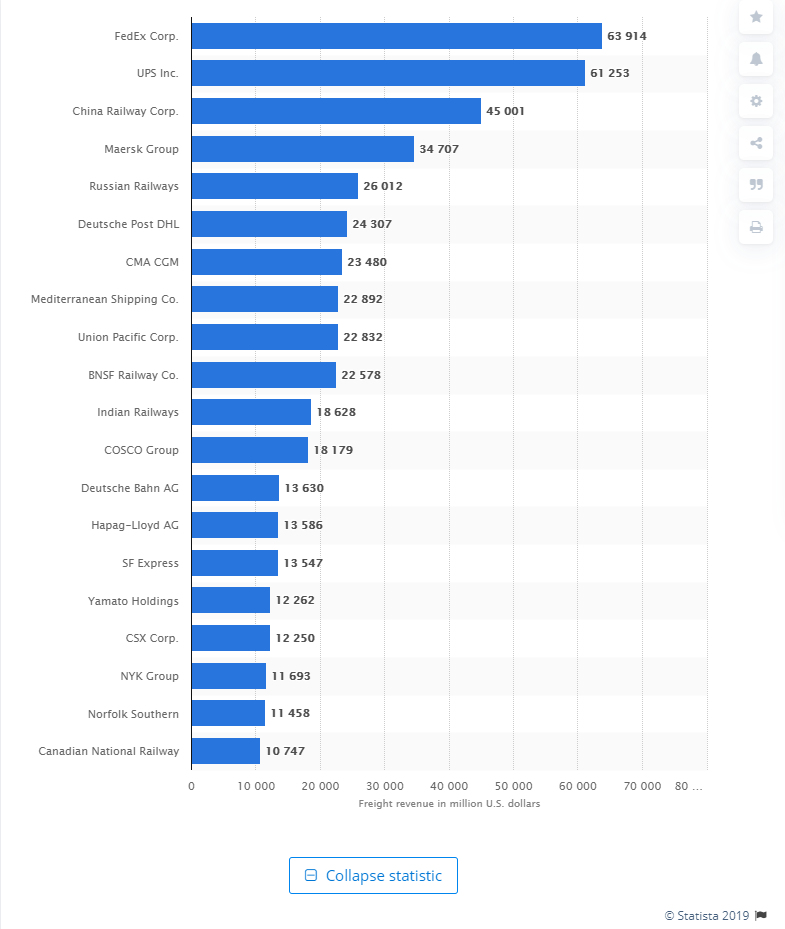
Source: Statista
Deutsche Post DHL, for instance, highlights that traditionally, TMSs were accessible to large companies only because of the complexity and enormous time and money expenses required to implement the software. However, new technologies, applications and integration capabilities significantly simplify transport management platforms and make them suitable for companies of different sizes.
In June 2018, DHL compiled a logistics trend radar — the forecast diagram depicting key trends that could influence the logistics industry in the next decade.
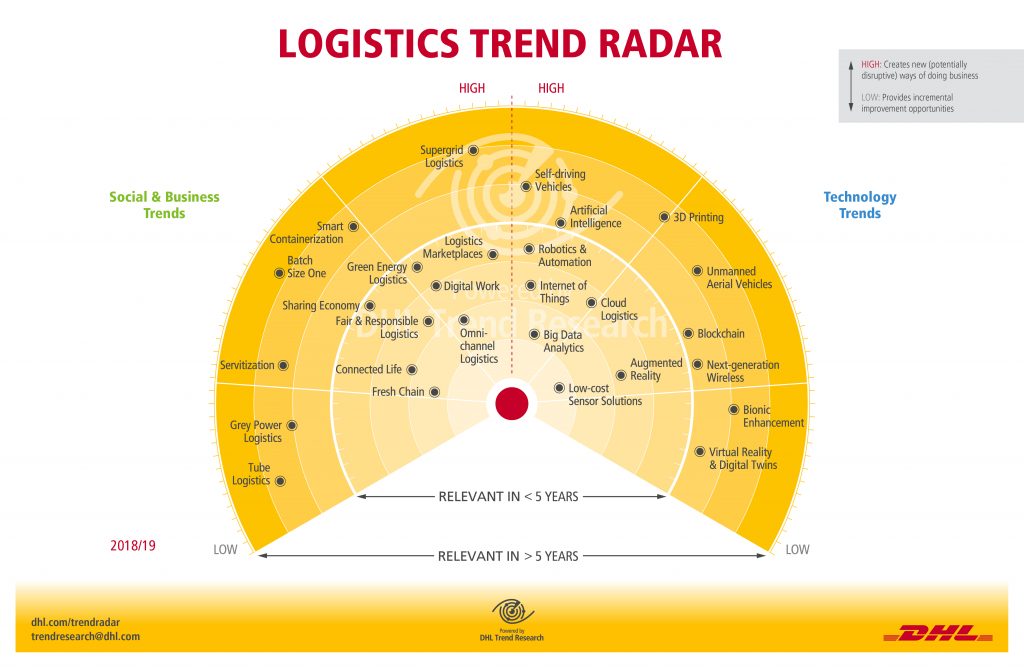
Source: Deutsche Post DHL
Among the most influential technology trends are Big Data analytics, Internet of Things, cloud logistics, augmented reality, low-cost sensor solutions, robotics and automation, artificial intelligence, and self-driving vehicles.
Functions of Logistics Software Solutions
There are various programs for transport companies such as CRM for freight forwarders, transport ERP solutions, warehouse management systems and other shipping software. They all have unique features and capabilities but basic functions are similar.
1. Planning
A TMS can integrate with numerous enterprise systems, such as warehouse management system, order and purchasing management system, CRM, accounting solutions and more, enabling users to plan the most efficient transportation scenarios.
On the basis of given parameters (distance, time, cost, a minimum required the number of stops, type of cargo, etc.), a transport management solution is able to define optimal routes, plan loading schemes and calculate the expenses.
2. Execution
Management systems monitor the execution of the shipment plan from point A to point B in the real-time mode. Drivers, carriers, managers and customers can access information on freight traffic, customs clearance, documents, automobile conditions, metrics, accidents, delays, etc.
When cargo is transported by several types of transport, it is necessary to maintain contact with various services (seaports, airports, customs, etc.).The system automates document processing and provides easy communication with all the participants.
You can inform relevant people via an application about the arrival time of your vehicle in advance (or warn about the delay) and automatically prepare the necessary documentation. Thus, your cargo will not have to queue up for loading or wait for shipping papers to be drawn up.
3. Analysis
A digital transport management solution uses key performance indicators (KPI), such as cost per mile, cost per shipping unit and delivery performance, to control service quality, analyze statistics and generate reports.
Thorough analysis and data-based reports are highly important for the optimization of processes and efficient decision-making.
Logistics Software Benefits
A TMS system brings benefits to shippers, carriers, warehouses, manufacturers, e-Commerce companies and many more users. Eventually, the system can greatly contribute to the creation of a seamless global trade network.
Organizations that make trucking logistics software and correctly deploy it can reap the following benefits:
- The automation of manual processes, which means that you can handle additional workloads in less time and without hiring more employees.
- Visibility of the supply chain, because all the information is integrated on a single platform, and all the participants of the shipping process can access it online and from anywhere.
- Reduced expenses are possible due to the automation of numerous processes and the elimination of human error.
- Better quality of services is provided by the ability of programs to analyze data online, generate dynamic reports, pinpoint discrepancies and make necessary adjustments quickly without serious consequences.
The cost of transportation logistics software may be rather high, but income from the above-mentioned advantages will definitely exceed initial expenses.
Steps to Build Logistics Management Software
The TMS market offers hundreds of ready-made solutions you can buy, deploy and instantly use. Still, they are not universal, and most companies require customization to tailor a system in accordance with their unique needs and operations. Here is a strategy on how to develop custom logistics software.
1. Choose a Provider
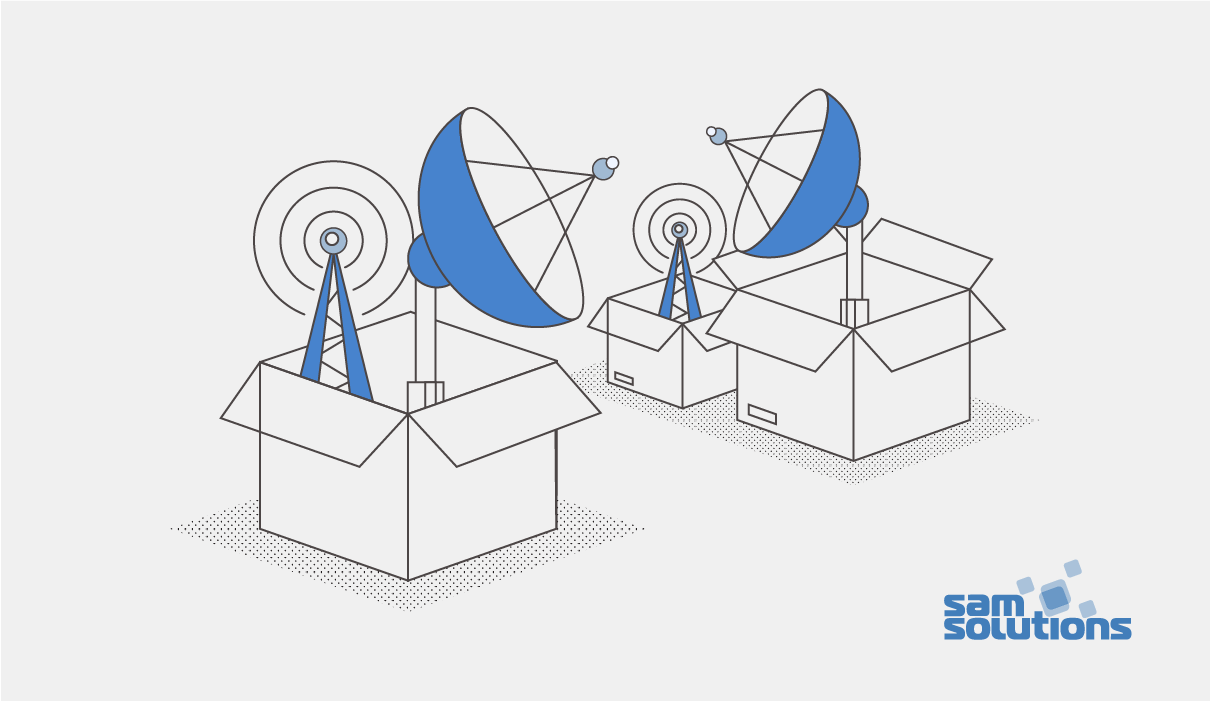
The first step of strategic importance is to choose a reliable provider. When comparing different offerings, pay attention to the following services a vendor should provide:
- Open architecture design, so it would be easy to implement new features and adopt new technologies.
- Integration with multiple services that enables you to utilize the full potential of a platform.
- Scalability to meet the increasing demand as your company grows.
- Security levels to protect critical data from breaches.
These criteria are universal but not the only ones you should consider. Other choice criteria should be based on the unique company’s needs.
To date, the leading vendors of transportation and logistics software include SAP, Oracle, Infor, Microsoft, JDA Software, Manhattan Associates and others.
2. Choose Between Cloud and On-Premises Deployment
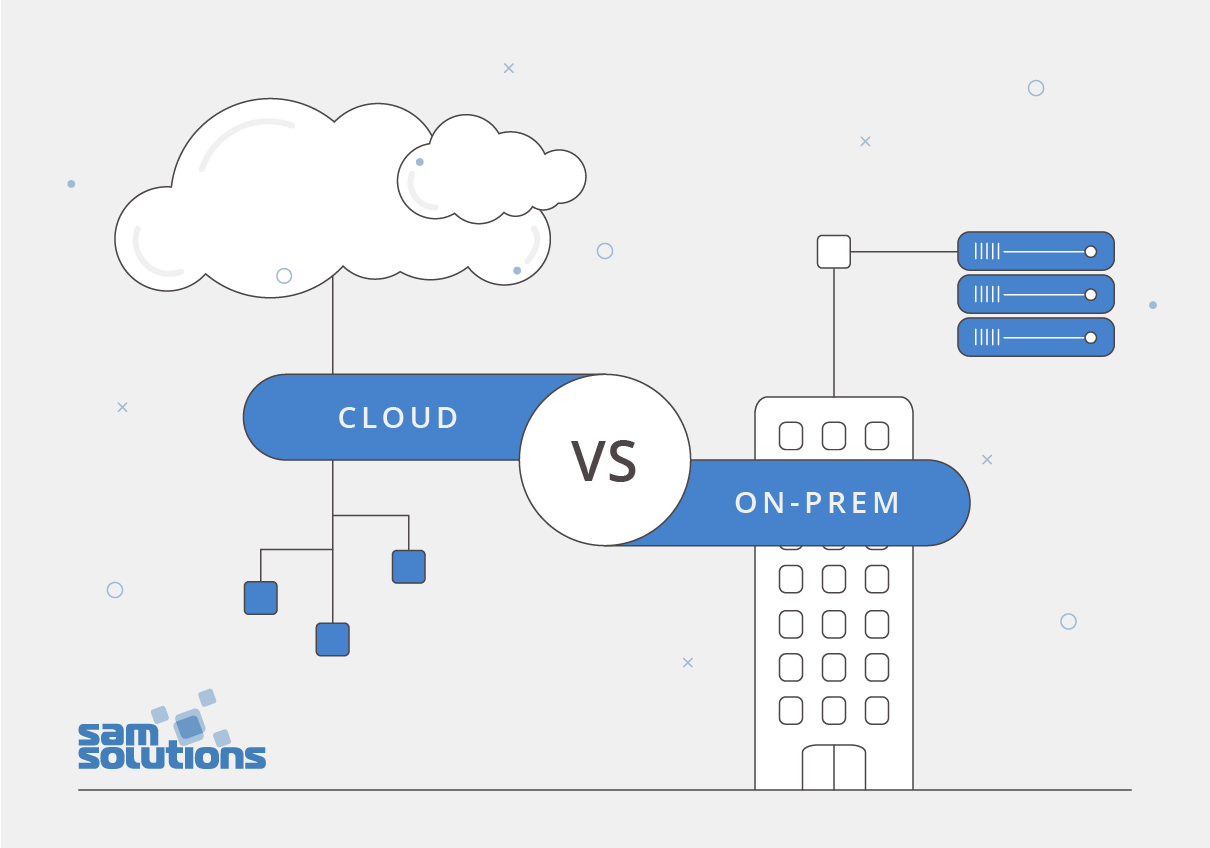
Logistics automation systems can be divided into two categories: on-premises and cloud-based. Software installation on local services requires significant financial investments, but many large manufacturing and distribution companies still prefer this type of hosting because of the security requirements and necessity to control servers on a daily basis.
Cloud-based transportation management systems do not need additional hardware and, in this case, the initial cost is much lower. Another big advantage is that all participants in the transportation process have fast and easy access to the system from any geographic location.
Again, the choice will depend on the performance needs of your organization.
3. Decide on Functionality
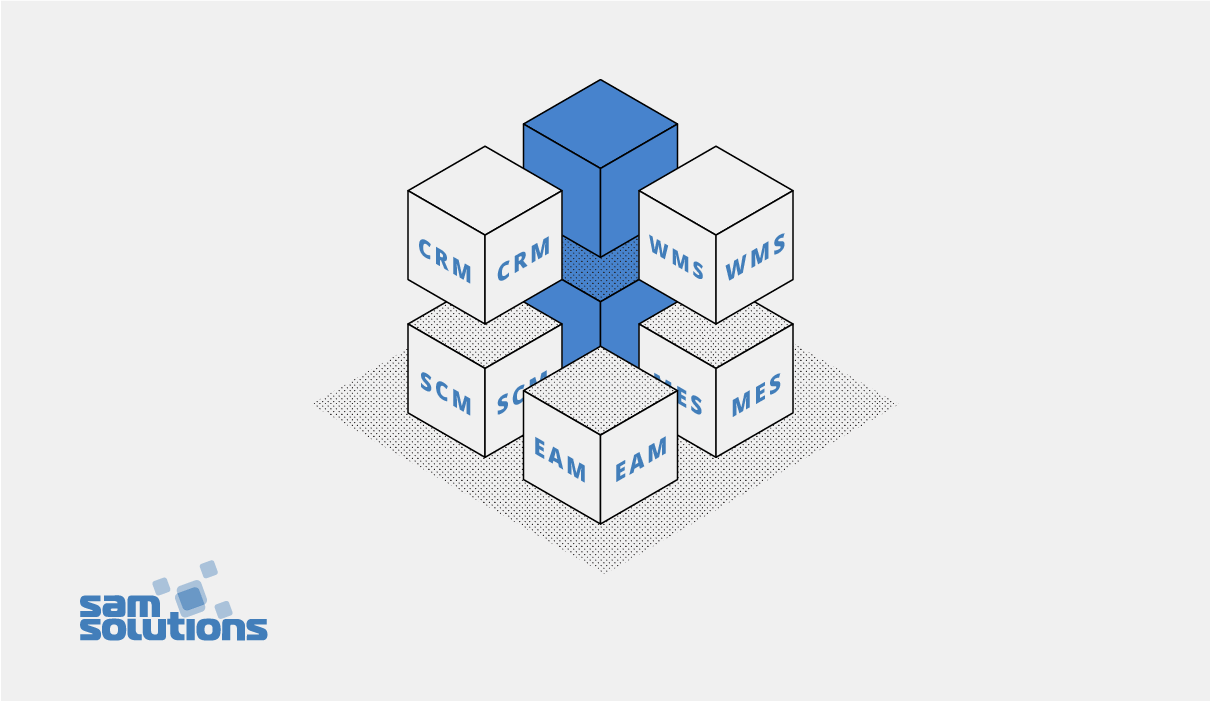
Based on the functions you want to automate, decide on the modules and tools that will be included in the system and make a draft.
Possible modules are:
- CRM — customer relationships management
- WMS — warehouse management systems
- SCM — supply chain management
- EAM — enterprise asset management
- MES — manufacturing execution systems
Then, professional designers and developers will work on the creation of APIs and interfaces for clients and administrators.
4. Build a Mobile Version
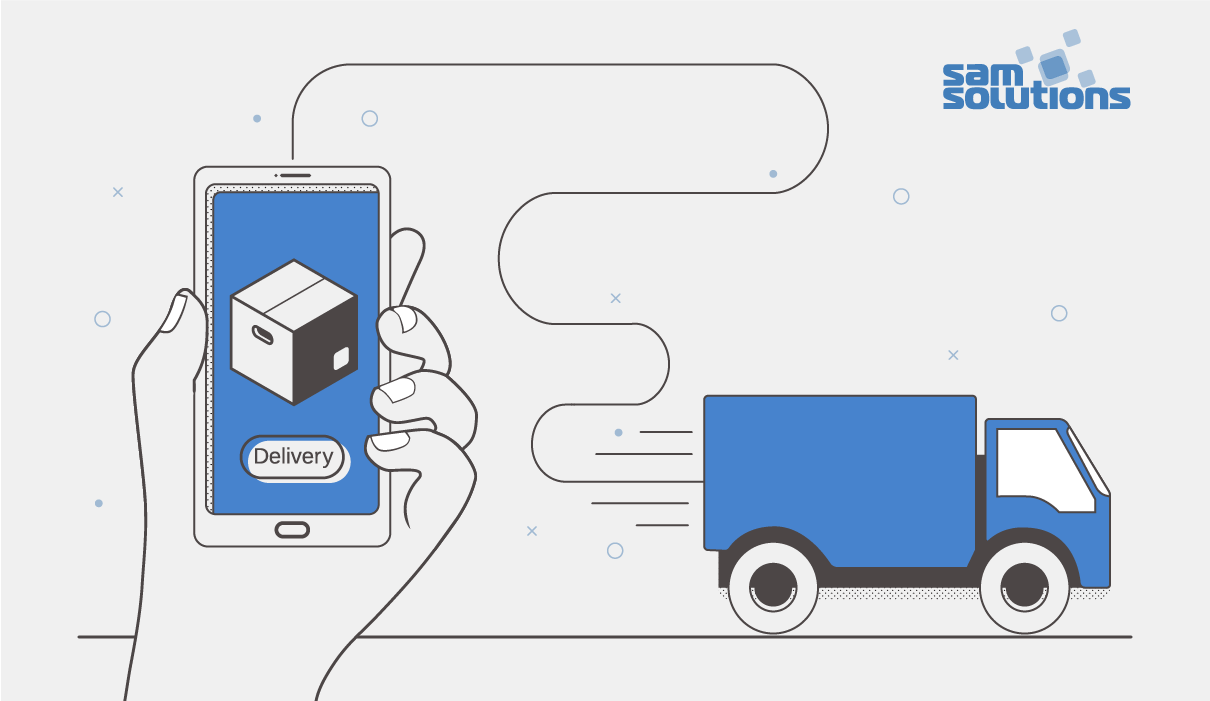
The automation of logistics processes implies that systems will generate a lot of real-time data. Accordingly, all the participants must have unlimited access to the system at any time, from any place and from any connected device to get the data, analyze it and make instant decisions.
Such a possibility can be provided, alongside cloud computing, by a mobile application. Consider developing native apps for drivers and for logistics managers to facilitate seamless transportation and better customer service.
SaM Solutions’ Experience in Logistics and Transportation
Among numerous software engineering projects SaM Solutions has developed, there were some projects we completed for the transportation industry.
Project 1
This project concerned the enhancement of a web application for the logistics and transportation management to comply with the ever-changing industry requirements.
The customer’s web app incorporated the full cycle of logistics operations and included transport and stock management systems, real-time transport tracking system, document control and accounting systems. Despite the fact that this advanced software came with a wide range of functions and features, it demanded ongoing enhancements to fit the ever-changing requirements of the logistics domain.
Together with the customer, our team identified what functionality could be extended and what new features could be added. The application was supposed to be capable of the following:
- Fine-grained and easy search
- Comprehensive mapping
- Multi-faceted real-time cargo tracking
- Multi-feature route management
Also, to provide positive user experience, our team was required to further improve the application performance and its user-friendliness.
Solution
To deliver a modern trouble-proof application, our team investigated its current functionality, as well as the customer and end-user requirements. After that, specialists made the following modifications:
- Developed an advanced server-side search.
- Improved the mapping functionality and its extension.
- Enhanced real-time shipment displaying.
- Built a feature that allows the creation and visualization of sustainable traffic routes for general cargoes, based on a variety of relevant factors.
- Developed new forms and controls.
- Created an option that allows application tuning in accordance with various user requirements.
- Customized UI control by the embedment of new configurations and by enabling grid-based sum calculations.
- Optimized form and grid loading, and server methods.
- Implemented new modules (scheduler, default values).
- Improved the overall application performance.
Success
As a result of our work, the customer received a scalable solution with enhanced functionality, reliable performance and improved user experience.
Project 2
Another project included the development of route visualization and calculation functionality for a parcel delivery application. The customer wanted to enhance the efficiency and time of its package delivery services.
Solution
The SaM Solutions team developed a full-fledged application that streamlines route guidance and includes the following components:
- route visualization that provides geographical data and determines top-priority deliveries;
- route calculation that lays routes considering traffic density and transport restrictions.
Success
The cooperation with the customer lasted for four years and resulted in the development of a comprehensive route visualization and calculation functionality. These components enhanced the capabilities of the corporate delivery management system and allowed the customer to streamline navigation and optimize its parcel delivery services.
Are you interested in developing your own transportation management solution that will make your business flourish? Contact us, and let’s discuss how to implement your ideas.



















 The Latest 15 Information Technology Trends in 2024
The Latest 15 Information Technology Trends in 2024 Top 10 Embedded Software Development Tools
Top 10 Embedded Software Development Tools IaaS vs. PaaS vs. SaaS: What’s the Difference?
IaaS vs. PaaS vs. SaaS: What’s the Difference? 10 Examples of Predictive Analytics
10 Examples of Predictive Analytics










 Web App Development Cost in 2025 [Key Price Factors]
Web App Development Cost in 2025 [Key Price Factors] 13 Best React Development Tools in 2025
13 Best React Development Tools in 2025 Top 10 Mobile App Development Trends 2025
Top 10 Mobile App Development Trends 2025 Top IoT Industry Trends in 2025
Top IoT Industry Trends in 2025 Java Web App Security: Everything You Need to Know
Java Web App Security: Everything You Need to Know
Logistics is the industry that widely utilizes various software solutions, leveraging the Internet of Things technology and cloud computing most of all. This segment will develop rapidly in spite of the economic crisis and COVID-19 pandemic because goods delivery and online shopping are not losing their positions and customers require more convenient conditions.
It’s always interesting to read about your practical use cases. Thanks for sharing the information on your logistics and transportation projects, it adds value to your company’s reputation.
I agree that a mobile application is an essential part of transportation management systems. It allows dispatchers and drivers to have real-time access to the necessary information and make the right decisions.
Real-time tracking of vehicles or transport telematics systems are becoming more and more popular now because they help solve so many problems and open new horizons for logistics businesses.
The transportation management system is much effective software for the transportation sector. That’s why we should know details about this software.
The topic of software for the logistics industry is really huge. You managed to highlight the main points in this article in an understandable manner.
This Software is very helpful for Transportation management system. I will share this great information with my groups. So everybody can know about this amazing software. Like your ideas on this topic!
A brief about one of the busiest and emerging technology about logistics in a convincing manner is highly appreciable. I will sure remark positively for pointing out the Transportation management software in detail!